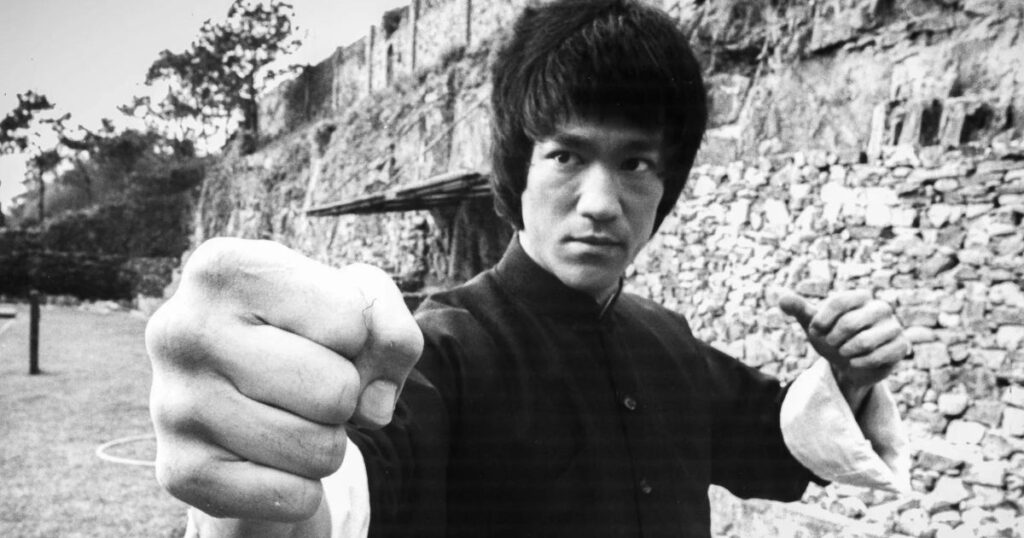Bruce Lee’s one-inch punch is a legendary move that has fascinated martial arts enthusiasts for decades. In this article, we will explore the science behind Bruce Lee’s power and his famous one-inch punch.
Introduction
Bruce Lee was a martial arts legend who revolutionized the world of martial arts with his innovative techniques and philosophy. One of his most famous feats was the one-inch punch, which he used to knock down opponents with a single blow.

The Science Behind Bruce Lee’s Power
The one-inch punch is a complex full-body movement that requires coordination and timing. According to Jessica Rose, a Stanford University biomechanical researcher, Lee’s lightning-quick jab actually starts with his legs. “His leading and trailing legs straighten with a rapid, explosive knee extension.”
“When watching the one-inch punch, you can see that his leading and trailing legs straighten with a rapid, explosive knee extension,” Rose says. The sudden jerk of his legs increases the twisting speed of Lee’s hips—which, in turn, lurches the shoulder of his thrusting arm forward. As Lee’s shoulder bolts ahead, his arm gets to work. The swift and simultaneous extension of his elbow drives his fist forward.
For a final flourish, Rose says, “flicking his wrist just prior to impact may further increase the fist velocity.” Once the punch lands on target, Lee pulls back almost immediately. Rose explains that this shortens the impact time of his blow, which compresses the force and makes it all the more powerful 1.
The Neuroscience Behind Bruce Lee’s Power
In a 2012 study, Ed Roberts, a neuroscientist at Imperial College London, compared the punching strength (at a range of slightly less than 2 inches) between practitioners of karate and physically fit people with similar amounts of muscle who do not practice martial arts. The study found that the karate practitioners were able to generate more force than the non-practitioners. Roberts also found that the karate practitioners had more white matter in the cerebellum, a part of the brain that is responsible for coordinating movement. The altered white matter allows for more abundant or complex cell connections in that brain region, Roberts says, which could increase the puncher’s ability to synchronize his or her movements. So Bruce Lee owes his master feat in part to a beefed-up glob of white matter 3.
The One-Inch Punch in Action
The one-inch punch is a powerful move that requires coordination and timing. To execute the one-inch punch, Lee would stand with his feet shoulder-width apart and his right foot slightly forward. He would then bring his right fist back to his hip, while his left hand would be held up in front of his chest. Lee would then take a small step forward with his right foot and simultaneously thrust his right fist forward, striking his target with a powerful blow. The one-inch punch is a testament to Lee’s incredible power and skill 1.
Conclusion
Bruce Lee’s one-inch punch is a legendary move that has fascinated martial arts enthusiasts for decades. The science behind Bruce Lee’s power and his famous one-inch punch is a complex full-body movement that requires coordination and timing. The neuroscience behind Bruce Lee’s power is also fascinating, as it shows how the brain plays a crucial role in coordinating movement. Bruce Lee’s one-inch punch is a testament to his incredible power and skill, and it will continue to inspire martial artists for generations to come.
Bruce Lee’s Method vs Chu Shong Tin‘s
Demonstration by Sifu Nima King – Mindful Wing Chun
1: The Science of Bruce Lee’s One-Inch Punch – Popular Mechanics 3: Research explains the neuroscience behind Bruce Lee’s one-inch punch – Bloody Elbow.
Source(s)
- 1. The Science of Bruce Lee’s One-Inch Punch – Popular Mechanics
- 2. The Science—And Neuroscience—Behind Bruce Lee’s Amazing One-Inch Punch
- 3. Unraveling the Secret of Martial Legend Bruce Lee’s One-Inch Punch
- 4. Research explains the neuroscience behind Bruce Lee’s one-inch punch
- 5. The science behind Bruce Lee’s one-inch punch – YouTube
- 6. How to Throw Bruce Lee’s 1-Inch Punch | The Art of Manliness
- 7. The Neuroscience Behind Bruce Lee’s Punching Power – Nerdist
- 8. One-inch punch – Wikipedia
- 9. Getty Images

